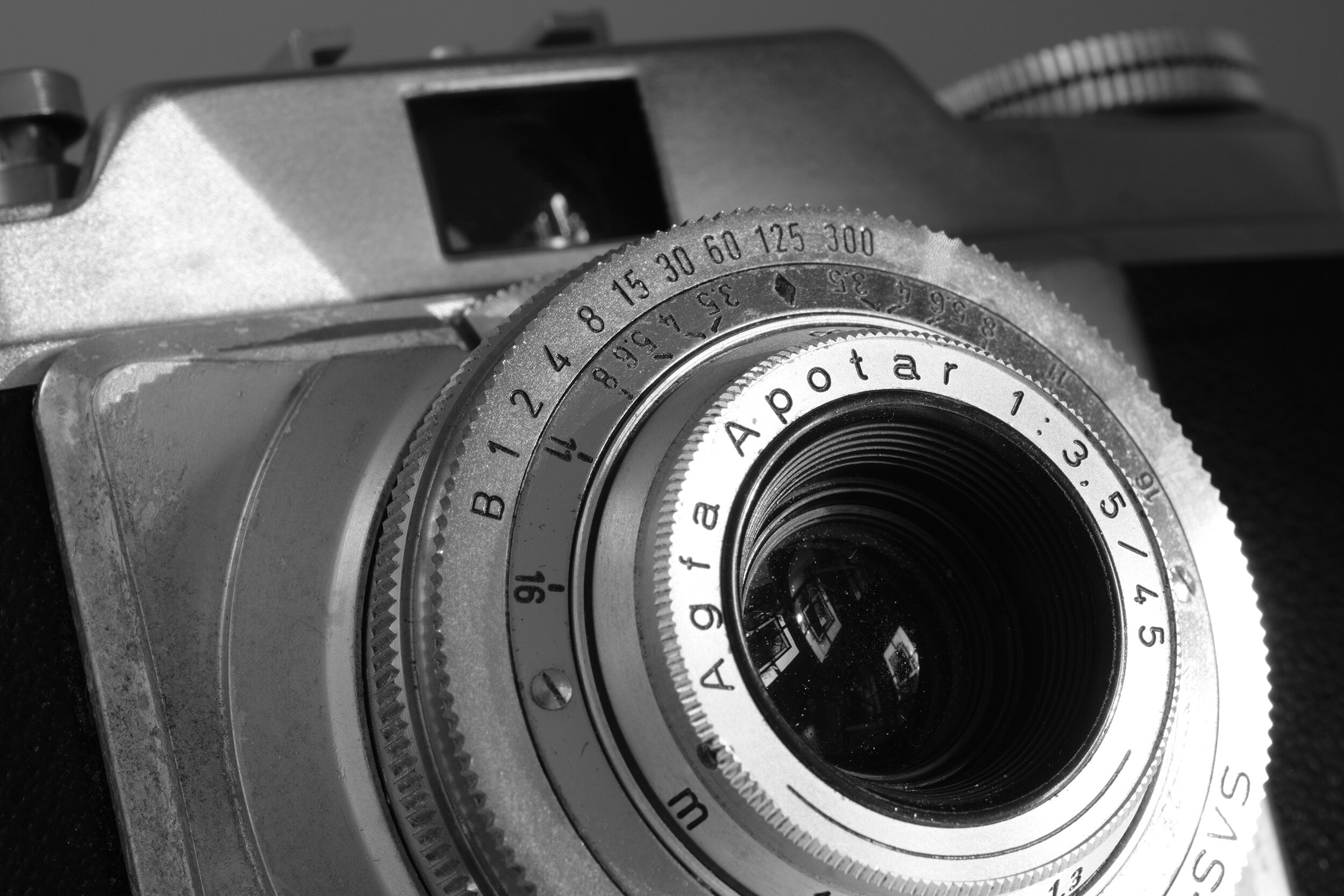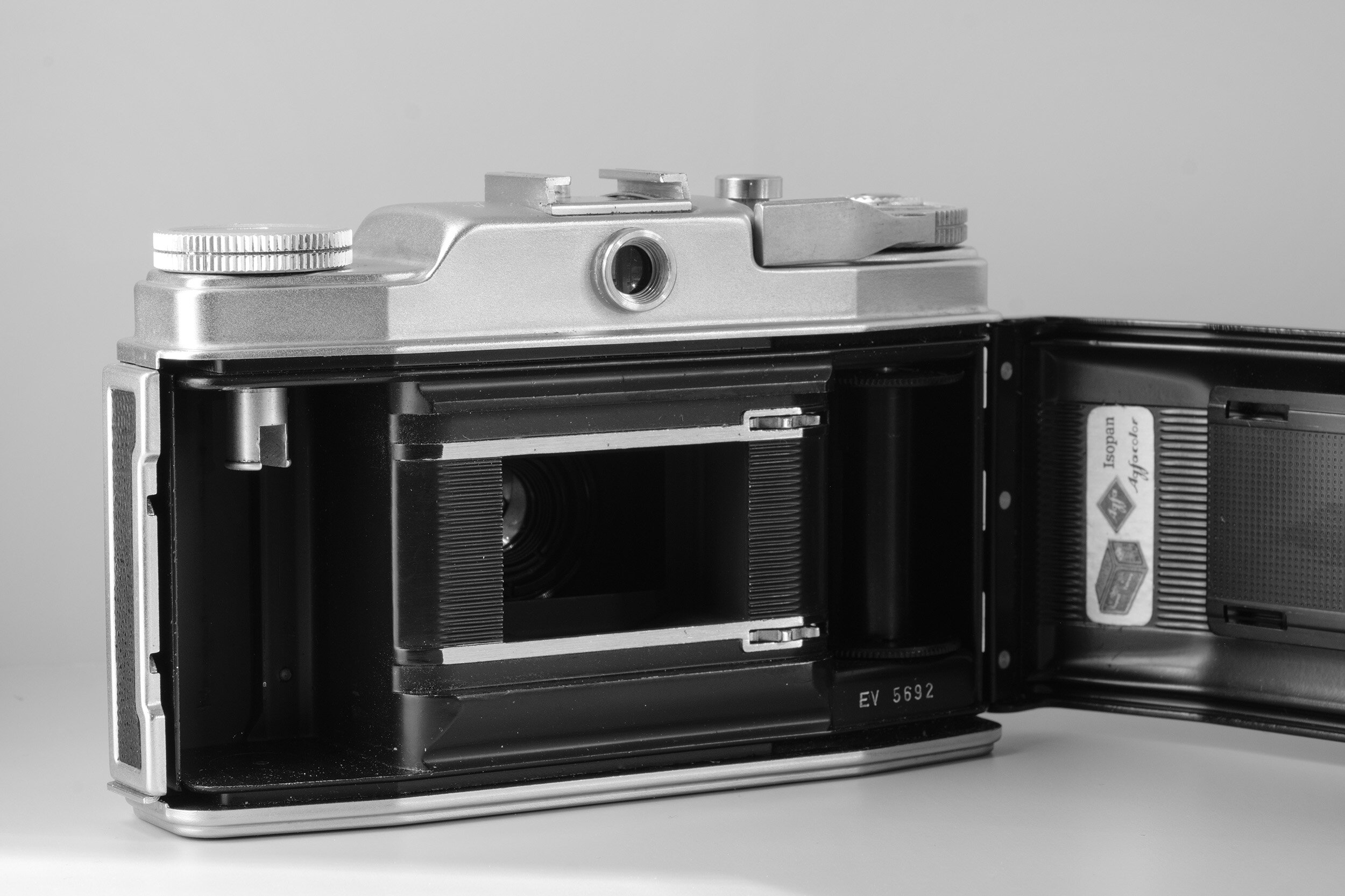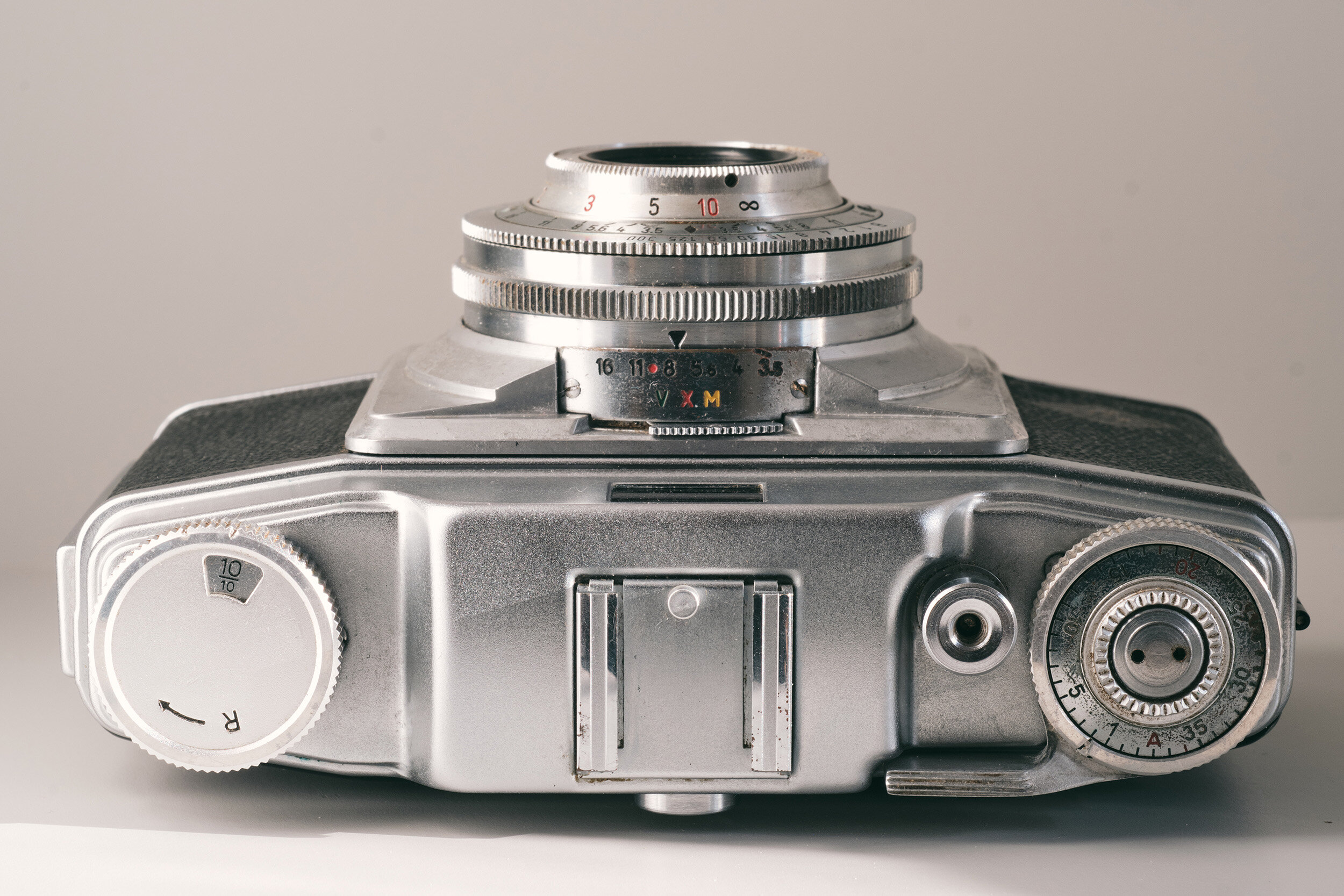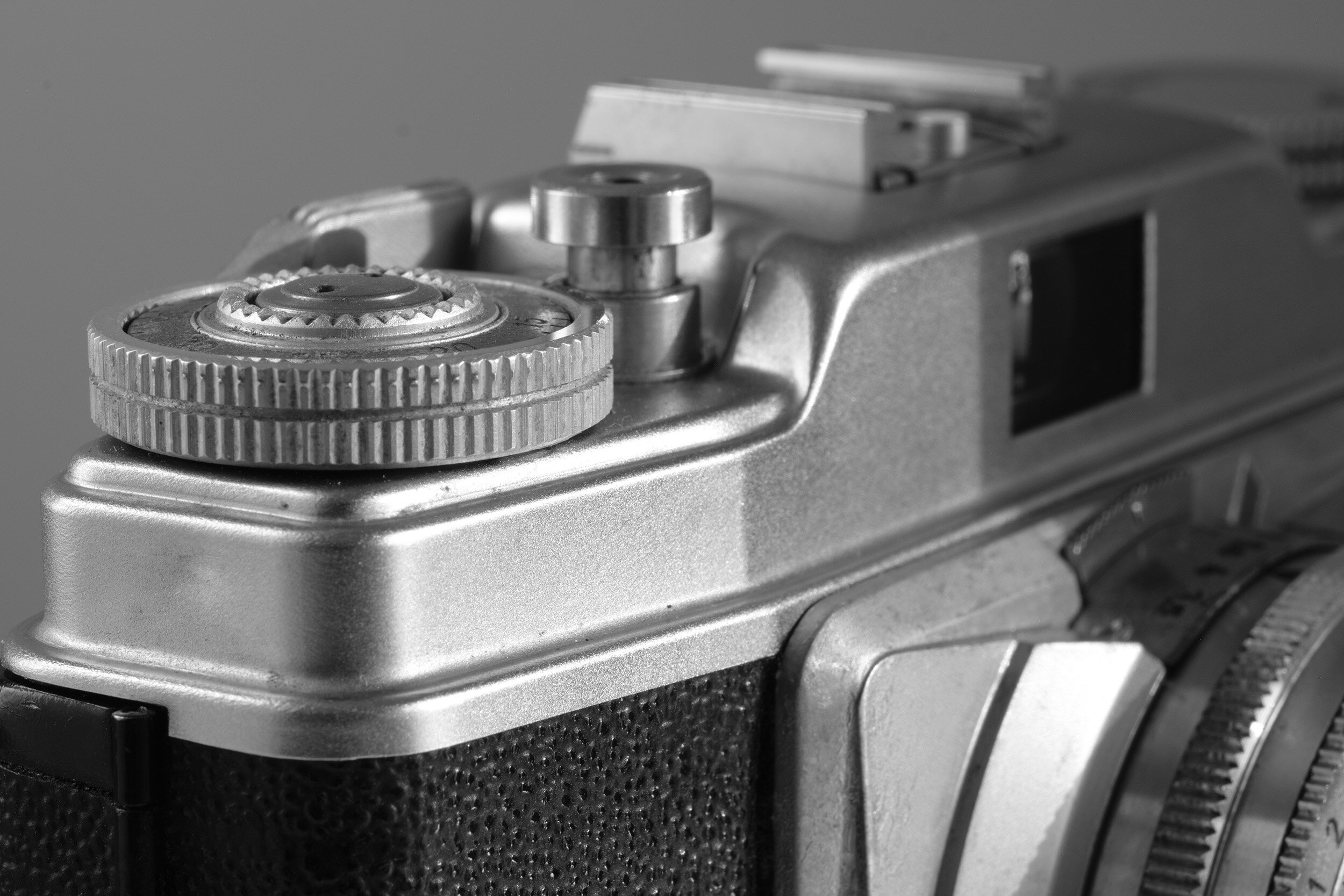Agfa Silette Review

Agfa Silette Type 2
Finding an Agfa Silette Type 2, From 1957
A Camera My Father Used in the Late Fifties
Film photography has resurfaced for me in recent months and it was largely triggered when I found a small box of negatives left by my late father with about ten rolls of film.
He passed away in 1972 when I was only 7 years old and in finding these negatives suddenly I had a portal into the past, to a period of time I eagerly wanted to know more about.
I found photos I had never seen before. Photos of my mom, dad, grandmother, and from my hometown of Lemvig in Denmark. To say the least, I was thrilled to the bone. At times it was quite emotional as most of the people in the photos have now passed on.
I found an old box with about 10 rolls of 35mm film to explore
Which Camera Did My Dad Use?
After copying the initial batch of negatives I immediately started wondering which camera my dad had used back in the fifties. Some of the photos were taken on a silver wedding anniversary and it cemented a date in 1955. Then I posted a few photos on a local Facebook group for my hometown and the consensus for those photos was that they were from 1958.
I know the owner of the local photography store “Click” in Lemvig, Peter Andersen, so I started a long online chat with him about old cameras. Peter is an avid collector of cameras. I thought perhaps one of the old store clerks if we could find one, would know. We agreed It was a long shot.
Photo by Poul Byskov: Agfa Silette, Type 2, Agfa Isopan F. My mother, Birgit Byskov, and Grandmother, Ester Pedersen. 1957. I am guessing they are out for a Sunday walk at the famous hairpin turn road, Vesterbjerg, in Lemvig Denmark.
I contacted my uncles and aunts. Perhaps they would recall but, again, it was a long shot and I did not get any closer to an answer. I already own one of my dad’s old cameras, a Zeiss Ikon Ikoflex, and it is a treasure to me as the only item I have from my dad.
Since I knew he had the medium format Zeiss Ikon Ikoflex I was surprised to find these 35mm rolls of film but the film format was about the only hint I had, or so I thought. I was secretly hoping that my dad had used a Leica back in the fifties as this surely would have been a nudge or hint, and given me a persuading reason to spoil myself with a Leica camera.
Photo by Poul Byskov: Agfa Silette, Type 2, Agfa Isopan F. Wintertime in Lemig. A tressure to find this photo of my uncle Oluf and my mother on a sled.
I copied the negatives over a few sessions and one day as I picked up the blue box containing the negatives the answer to my question was right in front of me. I couldn’t believe it. The box clearly had the branding; “Agfa Silette”. I had never noticed it and was elated and laughing at myself.
Why had I not seen this before? :) I didn’t know what an Agfa Silette was but I was about to find out. I consulted my friend, Peter, in Lemvig, and started researching Agfa Silette cameras online.
The old box from an Agfa Silette Type 2
Finding an Agfa Silette Type 2 on eBay
Admittedly I would never have bothered to look for something like an Agfa Silette but now that I had a reason, It was an interesting pursuit. The Agfa Silette was first produced in 1953 by Agfa in Munich, Germany and there are several models.
The Silette name was used until 1974 and the Type 2 version was released in 1957. In the USA the Agfa Silette was marketed under a different name; Ansco Memar.
If it hadn’t been for a sticker on the box I would not have known which model to go for. Two hints from the sticker, which by the way is half ripped off.
Ap. 3.5, which refers to the Agfa Apotar 45mm f/3.5 lens, and then the clincher, Typ Nr. 2. As you can see the number 2 is barely visible. I am very aware that I get carried away with this but felt I had just found the clue in a treasure hunt.
The Agfa Silette, Type 2, Protor-SVS with the Agfa Apotar 45mm f/3.5 lens
I was surprised to see dozens of Agfa Silettes on eBay. Mostly I found Type 1 and other models but only found only two Type 2 cameras, and one was not in working order. If you would like to try this camera I see no reason not to pick a Type 1, as they are easier to find.
The Type 2 that I found was in Stockholm, Sweden had been tested, and I paid about $75.00 including shipping. This price was higher than the average on eBay, meaning this is an inexpensive 35mm film camera option and way less than the Leica I was dreaming up.
Agfa Silette Photos From the Fifties
First Impressions of the Agfa Silette
Shipping time from Stockholm to Vancouver took about a month. I am sure I could have picked faster shipping options but it was not like I was racing to get my hands on the latest technology. The camera is smaller than I had expected but feels sturdy weighing in at 17 oz. / 482 g on my kitchen scale.
The focusing on the Apotar 45mm f/3.5 lens is very smooth and nicely dampened. The shutter speed and aperture dials on the lens have a nice tactile feel and click sound as you turn them. The F-stops range goes from f/3.5 to f/16 in full stops. Shutter speeds are Bulb, and then 1s to 1/300s.
The Agfa Apotar 45mm f/3.5 lens with focusing ring, shutter speed dial, and aperture dial. Agfa Silette - Type 2.
Viewfinder
The viewfinder is a basic window allowing you to see, generally, what you are photographing. That’s it! There is no focus aid or frame lines to work with meaning you have to work with zone focusing, measure or ballpark guess the distance to your subject.
Zone focusing works the following way; Set your aperture and then read the distance scale on the lens to see the range of distance that will be in focus.
Everything Is Manual
There is no help to be found. The Agfa Silette is fully manual. There is no light meter. I use either my digital camera or a Sekonic L-358 to meter light and will set an exposure accordingly. Focusing as mentioned is “a best estimate guess”.
Winding and rewinding film is also manual which should be no surprise. The good news is, that batteries are not needed as you do all the work yourself and the camera is fully mechanical.
The back of a 1957 Agfa Silette, Type 2. Made in Germany.
Film Advance / Rewind
The film frame counter is a cool-looking mechanical counter. You have to reset it manually. The film advance lever feels solid and has an elegant design and satisfying tactile feel with a spring mechanism that promptly pulls the lever back in place, flush with the camera after the film has been advanced.
I wish I could say the same about the rewind which feels rather awkward, flimsy, and not in line with the quality feel of the rest of the camera. At the bottom left of the camera, you find the latch to open the back to the film compartment.
Agfa Silette - in Action
As you may see from the photos there are no strap lugs on the camera. Many of the Agfa Silette cameras I found online came with a leather carrying case with a strap. Mine didn’t so cannot use it with a strap as it is. The good news is, that the camera fits in a jacket pocket.
I often talk about shutter sounds and the leaf shutter and the feel of the shutter release button on the Agfa Silette are top-notch. The sound is resounding but not a loud click. At longer shutter speeds you can hear the tiny gears moving inside the camera. Such a cool experience if you happen to be a camera enthusiast.
Agfa Silette and Ilford Pan F Plus
I picked a slow-speed film, 50 ISO, as the first roll to run through the Agfa Silette. Ideally, I would have loved to shoot the same Agfa Isopan F, ISO 40, film my dad used in the fifties but alas, as far as I can tell it was discontinued in 1970.
Loading the film was a bit tricky as the film advance felt tight, almost too tight. I was anxious to see if the film would overlap as I have experienced this with other cameras.
The Agfa Silette, Type 2, and Ilford Pan F Plus black and white film
Copying Negatives
Before we get to the results I want to mention how I copy my negatives. Finding the old negatives initiated my research into the best way to copy and preserve these precious rolls of film in a digital format.
I tried the Wolverine F2D Titan - film to digital converter and while it was a speedy way of copying numerous frames the quality was not quite up to my expectations. I have reviewed the F2D Titan here.
Instead, I settled on the following setup. The negatives were copied using a Fujifilm X-Pro2, an AF Micro Nikkor 60mm f/2.8D lens, and the Skier Sunray Copybox 3. RAW files were imported to Lightroom and I used the Negative Lab Pro plugin to convert the files.
I did exposure and level adjustments. I removed dust, scratches, and damaged areas of the film in Photoshop using the spot healing tool brush tool.
For detailed posts about copying negatives:
The Agfa Silette, Type 2, Protor-SVS with an Agfa Apotar 45mm f/3.5
Agfa Silette in the Field
I took the Agfa Silette through the streets of Vancouver and to some of my favorite spots around town. It did not take long to get familiar with the dials but as you would expect, setting the exposure manually and focusing manually did slow me down.
I picked mostly fairly static scenes and was hopeful the fine-grain Ilford Pan F Plus 50 ISO film would provide nice details. Let’s see below how it turned out. I will run to the lab now and pick up the film. Give me a sec…. Okay, I’m back.
Chevrolet Chevelle. Agfa Silette - Type 2, Ilford Pan F Super
Agfa Silette - Image Quality
The image quality of any film camera will depend on the film, how it was developed, and how it was scanned. This is my first roll of Ilford Pan F but from what I see it won’t be my last. It has excellent sharpness, and tonality, and while being a fine-grain film at ISO 50, the grain is still visible and pleasing to my eye.
I was happy to see how well the Agfa Apotar 45mm f/3.5 lens held up. I can’t say I was surprised. After copying the negatives from the fifties I could see that this camera/lens combination had potential. I did notice softness in the corners at f/4 but it the lens rendered with great character, especially stopped down. The image below is at f/11.
Window cleaners in downtown Vancouver. Agfa Silette - Type 2, Ilford Pan F Super
Agfa Silette - Conclusion After One Roll
I am certainly encouraged to shoot more with the Agfa Silette. The fastest shutter speed of 1/300s is limiting but not a big issue if you pick the right film speed for the job.
Rewinding the film was adventurous. It took a couple of minutes actually and was very tight. I’m not really sure if it is faulty or if something was jammed. But the film did not overlap and I got 35 frames on the roll so I may be overthinking this.
I look forward to exploring more with the Agfa Silette and plan to practice zone focusing as this will be quite liberating if I don’t stop and overthink my every move. This way I can concentrate on framing the subject and merely enjoy the tactile feel of the leaf shutter and smooth film advance.
This has been a great experience for me. I would encourage you to search your attic or moving boxes for hidden gems as such. It’s mind-boggling that these negatives have been in my possession since 1992 when my mom passed away and have been moved from Denmark to Canada, from one address to another.
The box of negatives was even in storage for a few years while we traveled and I never connected it to the treasure within, until curiosity had me dig deeper. Finally 63 years after the photos were captured they were rediscovered.
Agfa Silette Photos From 2020
My reviews at a glance: Camera Reviews - Archives
























